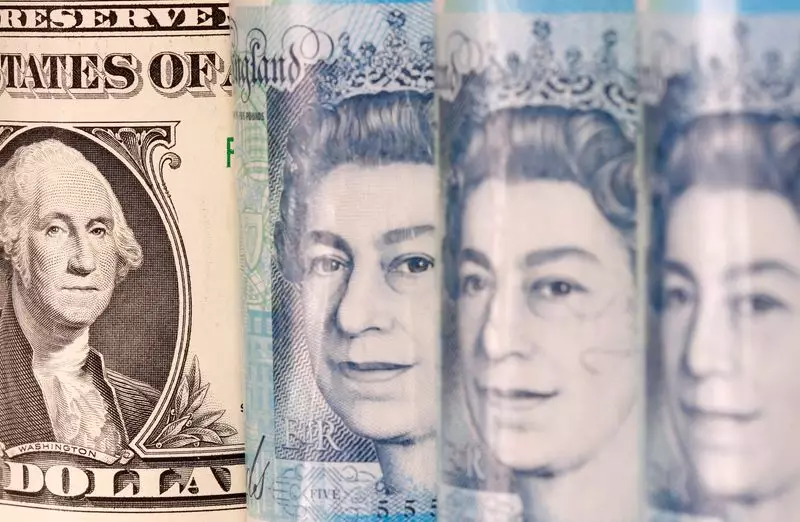In the wake of the recent U.S. presidential election results, the British pound is demonstrating noteworthy resilience despite experiencing a decline to a six-month low. On Monday, the pound managed a moderate uptick to $1.2627, recovering slightly from Friday’s low of $1.2598. This slight improvement highlights the complex interplay between global economic sentiments and domestic factors that influence currency valuation.
The dollar’s recent ascendancy, propelled by expectations surrounding Donald Trump’s administration, has played a crucial role in shaping forex market dynamics. As investors anticipate potential policy changes including trade tariffs and decreased taxation, expectations for a boost in economic growth and inflation have intensified. This has led to a significant rise in the dollar index, soaring approximately 3% following the election, which subsequently raises U.S. Treasury yields. Consequently, U.S. bonds are perceived as more appealing investments compared to those in other economies, bolstering the dollar further.
Despite the pound’s recent troubles, it is essential to understand that its performance relative to the euro has remained more favorable. The pound has depreciated around 2.7% since the election, and analysts contend that this decline is largely attributable to the strength of the U.S. dollar rather than any intrinsic weaknesses within the UK economy itself. Matthew Amis, an investment director at abrdn, articulates that the ongoing decline in sterling can predominantly be attributed to the robust demand for the dollar.
Current forecasts are sobering for those invested in the British economy. The Bank of England’s potential move to signal further rate cuts contributes to prevailing market apprehension, especially in light of recent economic data. The unexpected contraction of the UK economy in September, coupled with uninspiring growth numbers of merely 0.1% for the third quarter, adds pressure. These factors have collectively prompted traders to assign an 80% probability to the likelihood of another cut in rates next month, with expectations for the rates to decrease substantially by the end of the next year.
The outlook for the UK economy remains clouded, with the macroeconomic environment indicating that without concrete improvements, the pound may struggle to regain lost ground. The Bank of England’s current rate, which stands at 4.75%, is still higher when compared to its anticipated future rates. Should the UK economy continue on a sluggish path, the pressure on the pound could intensify.
Moreover, when viewed in the context of the euro, the currency’s performance tells a different story. The euro recently fell to a 2.5-year low against the pound, suggesting that the ramifications of impending U.S. tariffs may disproportionately affect the eurozone. As the global economic landscape shifts, traders must remain astute, considering how their investments will be influenced by trade relationships and currency valuations moving forward.
The pound’s recent stability amid a powerful dollar suggests a cautious optimism, but underlying economic indicators will ultimately dictate its trajectory. The current balance of internal challenges and external pressures paints a complex picture for the currency and prompts further scrutiny from investors in an unpredictable market.

